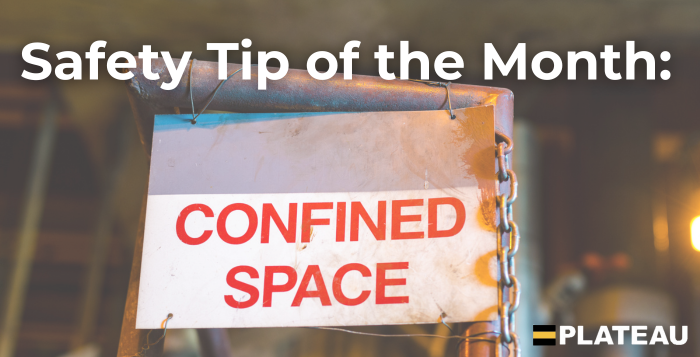Plateau Excavation

Confined Space
What is considered a Confined Space?
- Any space large enough and so configured to permit bodily entry to perform work.
- Limited or restricted means for entry and exit
- Not designed for continuous occupancy
Confined Space statistics according to OSHA:
- 2.1 million workers enter confined spaces every year.
- More than 100 workers die in confined spaces every year.
- 65% of all confined space fatalities are due to hazardous atmosphere.
- In the majority of fatalities, there were no air monitors and/or no ventilation present.
Common Confined Space Hazards:
- Lack of oxygen, presenting a suffocation hazard
- Fire or explosion hazards from an accumulation of flammable vapors.
- Health hazards from toxic vapors
- Difficulty exiting the space in the event of an emergency.
- Cramped spaces to work in, resulting in a danger of being caught in equipment.
- Poor visibility
- High levels of noise
- Temperature extremes
Things to know before entering a Confined Space:
- Have a safe way to enter the space.
- Have a safe way to quickly exit the space.
- Test the atmosphere before anyone enters and make sure it is found to be free of dangerous levels of toxic or flammable vapors and that there is sufficient oxygen.
- Continue to test and monitor the atmosphere to know that the atmosphere within the space is going to remain safe while you are working.
- Know the rescue plan in the event of an emergency and make sure the proper rescue equipment is available and in good condition.
- Know that the attendant outside the confined space is keeping an eye on you as you work and that they know the rescue plan.
- In the event that someone in a confined space becomes ill or injured, you should never enter to rescue someone without the proper equipment, training, and atmospheric testing. Chances are whatever caused the illness or injury will affect/harm you as well.

